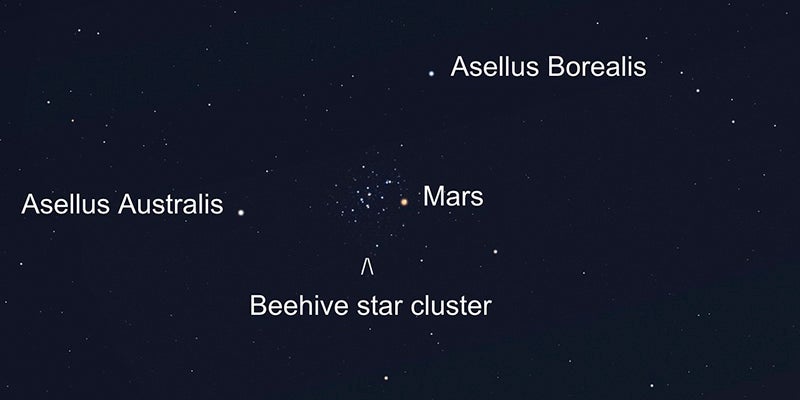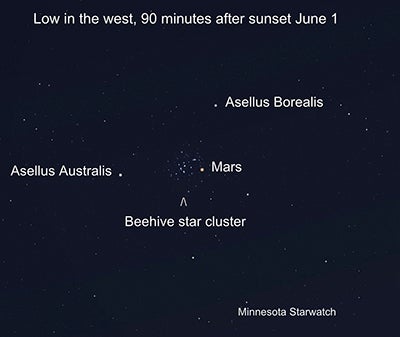StarWatch: Venus dazzles with Gemini
Published 6:31 pm Tuesday, May 23, 2023

- Graphic Provided
|
Getting your Trinity Audio player ready...
|
By Deane Morrison
As June opens, Venus forms a line with the Gemini twins. Nearby, Mars is poised to drift through the subdued but lovely Beehive star cluster in Cancer, the crab.
At nightfall on June 1 and 2, look for brilliant Venus above the western horizon. To the right of Venus, Pollux—the brighter Gemini twin—and Castor complete an almost perfectly straight line.

Graphic Provided
Above and left of Venus, Mars still ornaments the evening sky. On June 1, 2, and 3, grab your binoculars and watch Mars sail through the Beehive star cluster.
The Beehive is also known as Praesepe, Latin for “manger.” As Mars leaves the Beehive, it passes between two somewhat bright stars that frame the manger. These are the northern and southern asses—Asellus Borealis and Asellus Australis, respectively—which feed at the manger.
Looking upward and leftward again, the bright spring star Regulus, the heart of Leo, the lion, is closing in on the two planets. Watch this space between Tuesday and Friday, the 20th and 23rd, as a young waxing moon sweeps past Venus, Mars, and finally Regulus.
June’s full moon rises big and round the evening of the 3rd. It crosses the night sky next to Antares, the gigantic red heart of the summer constellation Scorpius.
In the predawn sky, Saturn is well up in the southeast and Jupiter spends the month climbing up from the eastern horizon. If you’re out early enough on the 14th, don’t miss the pretty pairing of a waning crescent moon and Jupiter.
Summer arrives with the solstice at 9:58 a.m. on the 21st, when the sun reaches a point over the Tropic of Cancer. At that moment an observer in space would see sunlight stretching from the Antarctic Circle up to the North Pole and over to the Arctic Circle on the dark side of the planet.
The University of Minnesota offers public viewings of the night sky at its Duluth and Twin Cities campuses. For more information, see:
• Duluth, Marshall W. Alworth Planetarium: www.d.umn.edu/planet
• Twin Cities, Minnesota Institute for Astrophysics: www.astro.umn.edu/outreach/pubnight
• Check out astronomy programs, free telescope events, and planetarium shows at the
• University of Minnesota’s Bell Museum: www.bellmuseum.umn.edu/astronomy
• Find U of M astronomers and links to the world of astronomy at: www.astro.umn.edu


